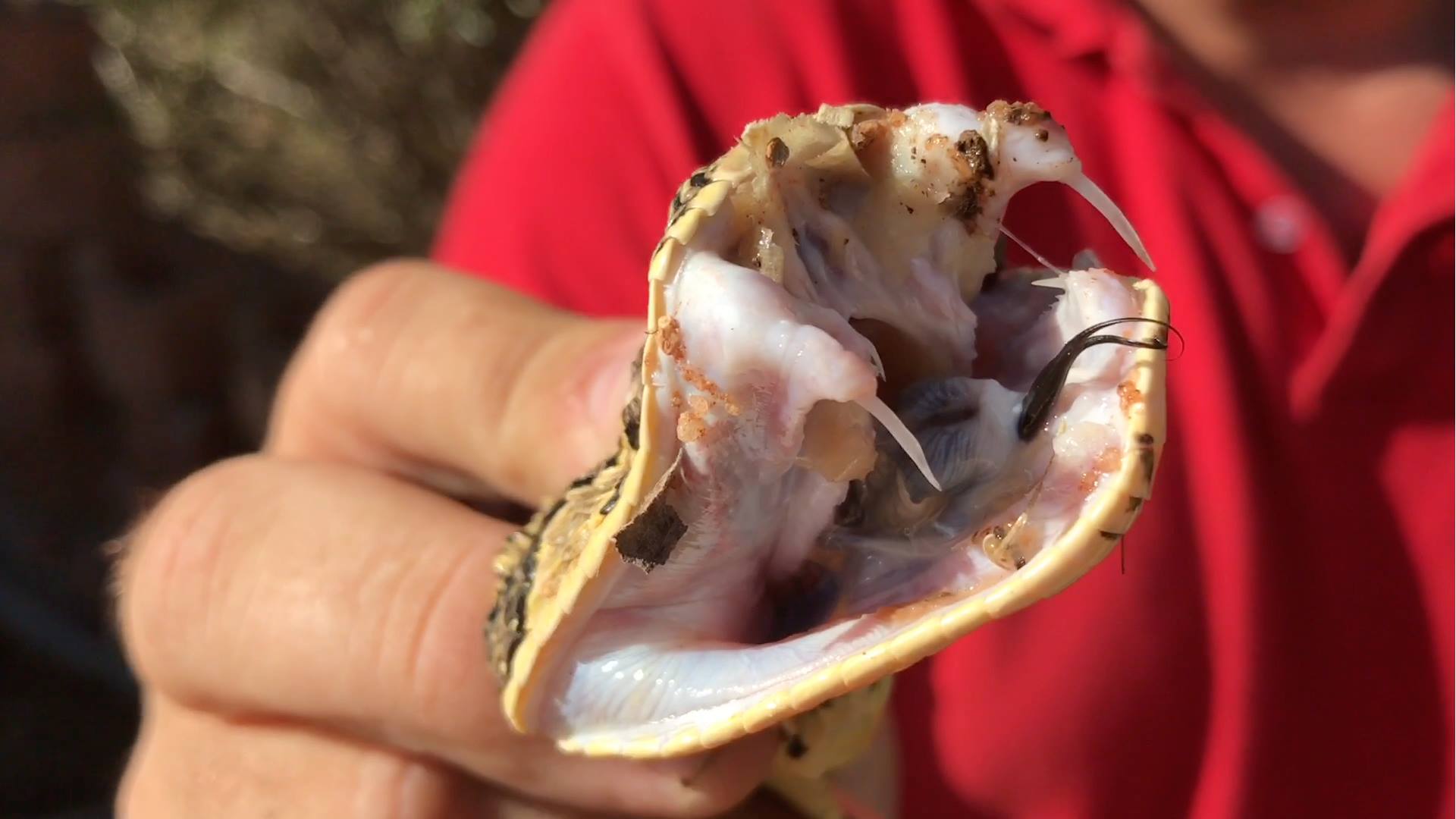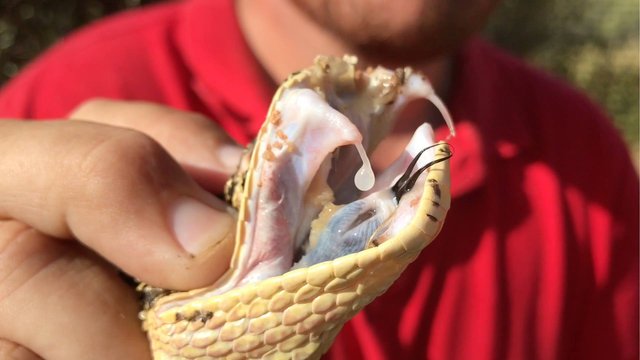Demonstration of Puff Adder Fangs
Johann Roux from Tygerberg Snake Rescue retrieved a Puff Adder from someone’s house today, but it unfortunately died shortly after he picked it up - it’s possible that the snake ate a mouse or rat that had eaten poison.
This gave us a great opportunity to demonstrate how a Puff Adder’s hinged fangs work, though.
WARNING: DO NOT try to pick up a snake like this yourself, even if you think the snake is dead. Necking a snake can only be done safely if you’ve had the relevant training.
--


Common throughout most of South Africa (excluding mountain-tops, true desert, and dense forests), Puff Adders are slow-moving and excitable snakes with potently cytotoxic (tissue destroying) venom.
Puff Adders rely on their camouflage to remain unseen, and when disturbed they coil into a defensive "S"-shape and hiss loudly (hence their name). They usually move in a straight caterpillar-like motion but may move in a more rapid serpentine motion when trying to get away.
They are responsible for a large number of bites because unlike most other snakes they won't move off when approached, and their exceptionally fast striking ability. Their fangs fold back against the roof of their mouths when not in use, and can be up to 18mm in length.
As ambush hunters, Puff Adders sometimes wait motionless in one spot for hours at a time. They feed on rats, mice, birds, lizards, and occasionally other snakes.
Viviparous, they give birth to 20-40 young in the late summer months.